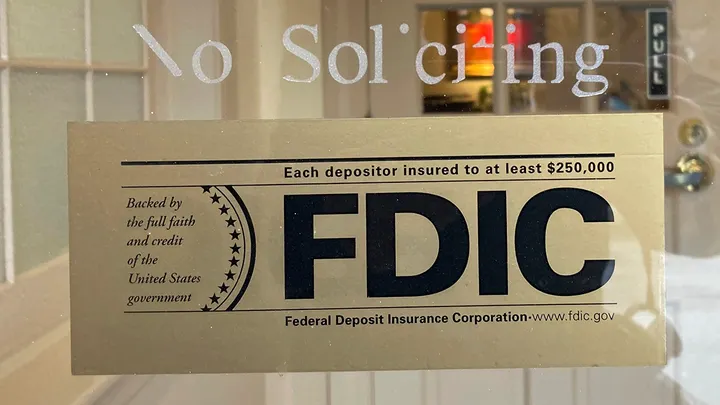
The crisis that roiled the U.S. banking system earlier this year after the failures of three relatively large regional banks saw total deposits fall even as insured deposits rose amid the turmoil.
The Federal Deposit Insurance Corporation (FDIC) released its quarterly profile of the U.S. banking system for the first quarter of 2023 on Wednesday, which revealed deposit activity as the banking crisis began with the failures of Silicon Valley Bank and Signature Bank in March.
“The recent banking stress amplified the outflow of deposits from the banking system, causing deposits to decline for the fourth consecutive quarter and at a faster rate than in prior quarters,” wrote FDIC Chairman Martin Gruenberg. “However, the deposit outflows have moderated since the end of the quarter.”
The FDIC found that total deposits were $18.7 trillion in the first quarter, a 2.5% reduction from the end of last year, which is “the largest reduction reported in the [Quarterly Banking Profile] since data collection began in 1984.”
The decline in overall deposits was driven by depositors with uninsured balances in excess of the FDIC’s $250,000 limit on insured deposits – uninsured deposits declined by 8.2% in the quarter as those depositors pulled their funds from banks amid concerns of broader contagion in the banking sector that could’ve left those funds vulnerable.
While the overall decline in deposits was driven by uninsured deposits being withdrawn, insured deposits in the banking system at large rose by 2.5% in the first quarter.
The FDIC noted that the Deposit Insurance Fund (DIF), which is used to backstop insured deposits when banks fail, saw its balance decline by $12.1 billion from the end of the fourth quarter to March 31, when it stood at $116.1 billion. That dropped the reserve ratio, which is the fund balance relative to insured deposits, by 14 basis points to 1.11%.
The decline was due to loss provisions for actual and anticipated bank failures – which at the time covered the failures of Silicon Valley Bank and Signature Bank as well as the anticipated failure of First Republic Bank. Ultimately, First Republic Bank failed after the conclusion of the first quarter and was acquired by JPMorgan Chase on May 1.
A plan to restore the FDIC’s Deposit Insurance Fund by assessing fees on large banks, from which community banks will be excluded, is in place and expected to restore the DIF reserve ratio to 1.35% by September 2028 as required by law.
“In conclusion, the banking industry has proven to be resilient. In the first quarter, net income was flat but still high by historical measures, asset quality metrics remained favorable, and the industry remains well capitalized. However, the industry’s quarterly results do not yet fully reflect the stress that began in early March,” Gruenberg wrote.
“The banking industry also faces significant downside risks from the effects of inflation, rising market interest rates, slower economic growth, and geopolitical uncertainty. These risks have the potential to weaken credit quality and profitability that could result in further tightening of underwriting, slower loan growth, and higher provision expenses,” he continued.
“Given these risks, the FDIC will be focused on monitoring the condition of the banking industry, including the impacts of the recent bank failures on liquidity, and taking appropriate supervisory actions,” Gruenberg wrote.
























